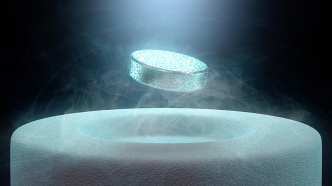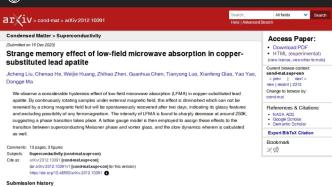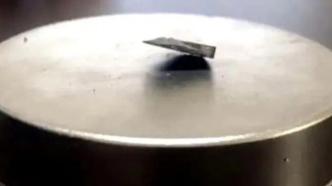
Recently, a team of scientists said that they discovered the world's first room temperature superconducting material LK-99. For a time, the global scientific community boiled.
What exactly is room-temperature superconductivity, and has it really been realized? What impact will it bring us? Perhaps a new "industrial revolution" will start from now on.
What is room temperature superconductivity, and material acquisition is comparable to "alchemy"?
Superconductivity refers to the phenomenon that the resistance of certain materials suddenly disappears, and there is no resistance at all when current passes. The superconducting materials discovered so far only exhibit superconducting properties in very special environments, such as high pressure, high temperature or low temperature, and the cost of maintaining this environment is very high, so this time LK-99's room temperature and normal pressure superconductivity will be So hotly debated.

Screenshot of the paper on the arXiv website.
The matter originated on July 22. The relevant research team of the Korea Quantum Energy Research Center announced through two papers and videos that under normal pressure conditions, a modified lead apatite crystal (LK-99) can be used at 400K (127°C) Below it behaves as a superconductor.
For a while, the above experiments began to be repeated around the world, because the synthesis of this material required long-term heating, etc. This process was ridiculed by many netizens as "burning furnace alchemy". Taking China as an example, based on incomplete statistics of public information, teams from Beihang University, Qufu Normal University, and Huazhong University of Science and Technology conducted recurrence experiments.
The video uploaded by the team of Huazhong University of Science and Technology on station B shows that the "superconducting material" is smaller than a toothpick, comparable to the tip of a needle. The experimental results must be observed with a microscope. Whether it is an N-level magnet or an S-level magnet, the material can reflect this. out of repulsion. This video once became the highest and No. 1 video on the Bilibili rankings.
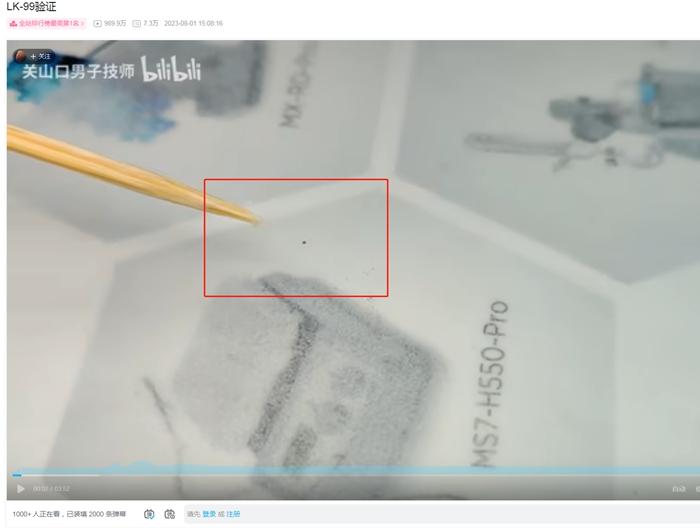
Screenshot of station B.
According to the above video, Wu Hao, a postdoctoral fellow at the School of Materials Science and Technology of Huazhong University of Science and Technology, and Yang Li, a doctoral student, under the guidance of Professor Chang Haixin, successfully verified and synthesized the LK-99 crystal that can be magnetically levitated for the first time. ) and others obtained a larger magnetic levitation angle of the sample, which is expected to realize the true non-contact superconducting magnetic levitation.
But what is interesting is that the result of "refining" superconducting materials seems to be very random.
For example, the research team of Beijing University of Aeronautics and Astronautics stated that it successfully prepared the LK-99 material, and no magnetic levitation phenomenon and zero resistance phenomenon were observed. One of the six samples by Sun Yue's team at Southeast University observed a decrease in 110K resistance, but no complete diamagnetism was measured. The experimenter speculated that the superconducting component in the sample was very low.
Is it possible to achieve it, where is the difficulty?
Is it possible to achieve room temperature superconductivity? What is the difficulty? Why did it attract countless scientists to "bow down".
On August 2, the Korea Superconducting Society announced the establishment of the "LK-99 Verification Committee" to test the authenticity of the achievement. As of now, the Society has declared that LK-99 cannot be called a room-temperature superconductor based on the data presented in the two papers and the published video.
Xiao Chijie, a professor at the School of Physics of Peking University, said in an interview with Chinanews.com that room temperature and normal pressure superconductivity is the Holy Grail in the field of physics and one of human dreams. If you follow your dreams and explore, everything is possible." According to reports, Xiao Chijie's research field is magnetic confinement thermonuclear fusion.
Zhou Xieyu, a senior researcher at Beijing Longxun Kuangteng Technology Co., Ltd., told Chinanews.com that room temperature superconductivity is still a mountain that is difficult to climb in the short term. The Korean room-temperature superconducting material LK-99, which has been on fire recently, has not yet tested the two major characteristics of superconductors at the same time, that is, zero resistance and complete diamagnetism. Repeated experiments.
Recently, the official account of the "Institute of Physics, Chinese Academy of Sciences" issued an article saying that it is really difficult to judge, but it is not difficult to verify the authenticity. According to the Korean author, a batch of samples can be prepared in three days at the fastest.
As mentioned above, some of the currently disclosed reprinted LK-99 materials have diamagnetism detected, but the phenomenon of zero resistance at room temperature and normal pressure has not been detected.
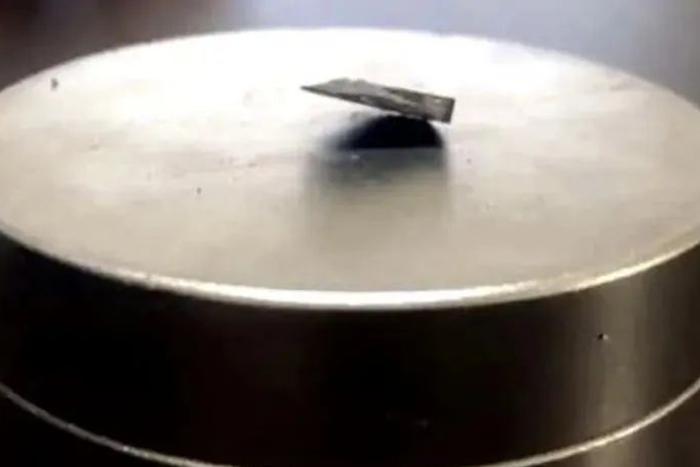
A screenshot of the Korean team's paper presentation video.
Some media quoted Xu Qingjin, a researcher at the Institute of High Energy Physics of the Chinese Academy of Sciences, as saying that the public's high attention to room-temperature superconductivity shows everyone's enthusiasm for scientific topics, which is a gratifying place. However, some self-media are too "headline party" and exaggerated, seriously misleading everyone. Room temperature superconductivity is very beautiful, but it is also difficult to realize.
Once a breakthrough, what applications will it bring?
Although the road to the realization of room temperature superconductivity is difficult, what impact will it bring to us once it is realized?
Xiao Chijie said that it is difficult to list them all, but after the industrial application of atmospheric pressure and room temperature superconducting technology, it will greatly promote the engineering feasibility and economic feasibility of magnetic confinement thermonuclear fusion energy, and the utilization of fusion energy will have an important impact on human civilization. , so the importance of room temperature superconductivity at atmospheric pressure cannot be overemphasized.
Feng Junlan, chief scientist of China Mobile, said recently that if room temperature superconductivity is realized, quantum computing will have a qualitative leap and further promote the development of large models.
The industry generally believes that if room temperature superconductivity is realized, it will bring about qualitative changes in the fields of maglev trains, lossless power transmission, quantum computers, controlled nuclear fusion, and medical imaging.
For example, controlled nuclear fusion requires extremely strong magnetic fields to confine fusion in a small space, while superconducting magnets can generate strong magnetic fields, and room-temperature superconductors further reduce energy consumption.
In addition, the complete diamagnetism of room temperature superconducting reduces the need for refrigeration of maglev equipment, making superconducting maglev trains easier to realize. "After the popularization of maglev trains, commuting to work will be more efficient in the future." Some netizens said.
